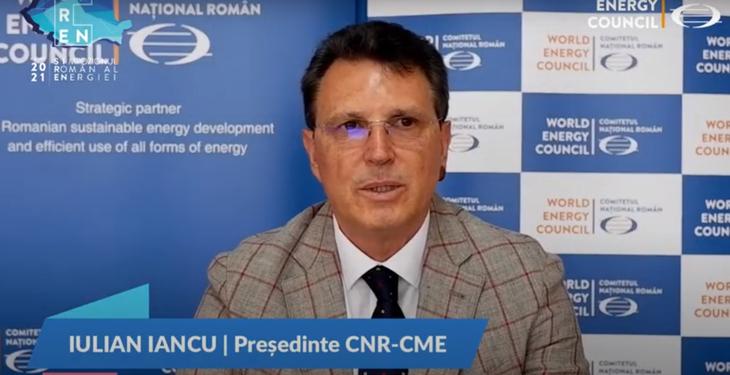Proposals within the “Fit for 55” will allow the necessary acceleration of the reduction of greenhouse gas emissions in the next decade, it is shown in a release of CNR-CME. These combine: the application of emissions trading to new sectors and a tightening of the existing EU emissions trading system; increased use of energy from renewable sources; higher energy efficiency; faster launch of low-emission modes of transport and infrastructure and fuels to support them; an alignment of taxation policies with the objectives of the European Green Agreement; measures to prevent carbon leakage and tools for conserving and increasing natural carbon resources, says CNR-CME.
Romania will be the most affected by the EU “Fit for 55” package for reducing carbon emissions; following the application of this plan, the number of vulnerable consumers will increase greatly – Iulian Iancu, the president of the Romanian National Committee of the World Energy Council (CNR-CME).
Thus, the document “Communication from the Commission to the European Parliament, the Council, the European Economic and Social Committee and the Committee of the Regions: “Fit for 55″ – achieving the EU’s 2030 climate neutrality goal”, launched by the EC, represents a summary of the EU measures to meet climate goals.
The document states that the EU Emissions Trading Scheme (ETS) puts a price on carbon and reduces the annual ceiling for emissions in certain economic sectors. In the last 16 years, it has successfully reduced emissions from electricity production and energy-intensive industries by 42.8%. The Commission proposes to further reduce the global emission ceiling and increase its annual reduction rate.
To supplement substantial climate spending in the EU budget, Member States should spend all their revenues from emissions trading on climate and energy projects. A dedicated part of the revenue from the new road and building transport system should address the possible social impact on vulnerable households, micro-enterprises and transport users.
The Land Use, Forestry and Agriculture Regulation sets an overall EU target for carbon sequestration from natural resources, equivalent to 310 million tonnes of CO2 emissions by 2030. National targets will require Member States to take care of and expand carbon resources to achieve this goal.
Energy production and use account for 75% of EU emissions, so accelerating the transition to a greener energy system is crucial. The Renewable Energy Directive will set an increased target to produce 40% of our energy from renewable sources, by 2030. Specific targets are proposed for the use of renewable energy in transport, heating and cooling, buildings and industry. In order to meet both our climate and environmental objectives, the sustainability criteria for the use of bioenergy are strengthened.
In order to reduce overall energy consumption, emissions and combat energy poverty, the Energy Efficiency Directive will set a mandatory, more ambitious annual target for reducing energy consumption at EU level. It will guide the way national contributions are set and almost double the annual energy saving obligation for Member States. The public sector will be forced to renovate 3% of its buildings each year to drive the wave of renovation, create jobs and reduce energy consumption and costs for taxpayers.
Stronger CO2 emission standards for cars and require that the average emissions of new cars decrease by 55% by 2030 and 100% by 2035 compared to 2021. As a result, all new cars registered from 2035 will have zero emissions. The revised alternative fuels infrastructure regulation will require Member States to expand charging capacity in line with sales of zero-emission vehicles and to install charging and refueling points at regular intervals on major motorways: every 60 kilometers for electric charging and every 150 kilometers for hydrogen supply.
The Regulation on alternative fuels infrastructure requires aircraft and ships to have access to clean electricity supply in the main ports and airports. The ReFuelEU aviation initiative will require fuel suppliers to mix increasing levels of sustainable aviation fuel with aircraft fuel, including low-carbon synthetic fuels, known as e-fuels. Similarly, the FuelEU Maritime Initiative will stimulate the use of sustainable marine fuels and zero-emission technologies by setting a maximum limit on the greenhouse gas content used by ships calling at European ports.
On September 6-8, CNR-CME organizes SIREN – Romanian Energy Symposium 2021!
The tax system for energy products must protect and improve the single market and support the green transition by setting the right incentives. A revision of the Energy Taxation Directive proposes to align the taxation of energy products with EU energy and climate policies, promoting clean technologies and eliminating obsolete exemptions and low rates that currently encourage the use of fossil fuels.
At the same time, a new Carbon Border Adjustment Mechanism will put a price on carbon on imports of a specific selection of products, to ensure that Europe’s ambitious climate action does not lead to “carbon relocation.” This will ensure that European emission reductions contribute to an overall reduction in emissions, rather than pushing carbon-intensive production outside Europe.
